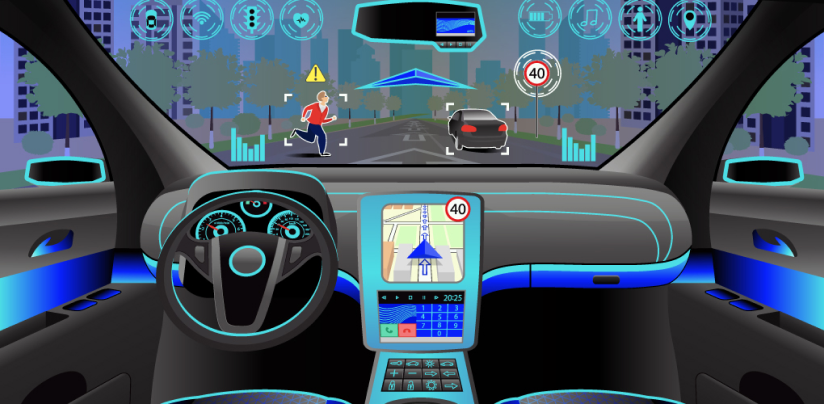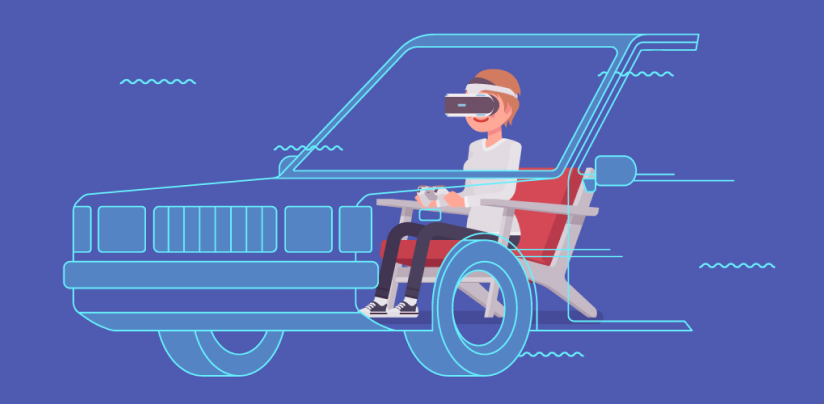The evolution of cars is a continuous striving to improve both the motor and the comfort for everyone.
But there is always room for improvement. Cars manufacturers rely more and more on apps at every stage of a car’s life cycle: design, engineering, production and maintenance, driving, and riding.
And this is where Virtual Reality finds its place in the automotive industry.
Although some of the VR automotive apps looked like bulky experiments just a few years ago, they are now capable of providing benefits that directly affect customers’ decision making.
How does the use of Virtual Reality in the automotive industry help different audiences?
1
Virtual Reality in automotive: game-changing apps for engineers and car mechanics
Although the automotive industry tends to be laggards when it comes to safety, it is ahead of the curve when it comes to productivity and comfort—and keeping pace with innovation.
Today’s automotive manufacturers produce vehicles that are smarter, owner friendly, with great eye appeal that taps into a buyer’s inner dreams—and, when they must, greener and more economical. At the same time, they must retain competitive pricing. This can be achieved through improved workflow and faster time to market. This is where VR helps the automotive industry: increased computational power of VR gear makes it possible to use VR apps consolidated information and its visual display. In its turn, it enables shortening decision-making time and improve knowledge sharing among distributed teams.
COLLABORATION TOOLS
Virtual Reality helps in designing automotive prototypes quickly and efficiently. A VR environment enables producing, sharing, discussing, and reviewing as many vehicle variants as possible. The use of 3D-model-based mockups can be combined with a purpose to provide more context than paper layouts. While working with a car’s real dimensions, teams are capable of detecting flaws and errors in the early stages where the cost of correction is minimal.
Also, 3D mockups provide the same level of awareness as building a physical model. This both drastically reduces production time and gives design teams earlier feedback, thus shortening time to market.
SIMULATION SOFTWARE
Virtual Reality can be used to simulate any manufacturing process. For example, engineers can reproduce the assembly order and put real workers on a virtual assembly line. Using VR trackers, workers perform various operations while engineers inspect workflow and identify possible bottlenecks in the production line.
Using VR this way helps avoid a costly production line relaunch every time it fails to reach the designated output due to uncovered issues.
LEARNING APPS
VR apps with visual assembly instructions can be used for trainees at every level. New employees can learn assembly order, required instruments, etc. Experienced staff can learn the differences between a newer model and an older one, thus eliminating delays on the production line.
VR learning apps provide instructions and visual prompts within a safe learning environment. Nothing breaks, nothing crashes, no one gets hurt.
A study shows the level of completed tasks increased from the 50th percentile to the 66th percentile—plus a higher retention rate of information—when comparing VR training to training on real equipment.

2
Automotive Virtual Reality focuses on drivers
AR apps are used for marketing and promotion, e.g., HondaLens Detroit Auto Show 2018, Microsoft’s HoloLens app was designed to tell the story about a new Honda concept.
Automotive VR apps keep pace with their AR counterparts offering an immersive dive into the advertised product. Do your dealers offer VR configurators or appoint virtual test drives? If no, they absolutely must establish a virtual showroom with a virtual track, cozy seats, and a branded wheel. Let it become the “go-to” place and watch sales rise.
Using Virtual Reality helmets, fans can test all available models and configurations. If they have their own helmet, they can “test drive” it from home, getting the right feel of the car even before they head to the dealer to close the deal.
VR CONFIGURATORS
Website configurators make it possible to customize a car model then order it with just a few clicks. However, a VR configuration app provides many more features offering views in 1:1 dimension from any angle. Users can get in the VR-based car, start the engine or tap through the menu on the dashboard screen. Night mode can help evaluate the car’s lights, including interior and dash panel lights.
When users discover virtual boxes of several sizes plus long-sized items, such as skis or fishing rods nearby, stacked near the car trunk, they can try putting them into the car and evaluate available luggage space. This option helps make both an informed and emotional decision.
VIRTUAL TEST DRIVING
This is probably the most beneficial use case today allowing car brands to promote their innovations among engaged audiences with zero risk to safety and brand reputation.
First things first: virtual driving is safe. If a customer wants to put the virtual pedal to the metal to find out what really is under the hood and decide whether there is enough bang for the buck, no one and nothing is in danger. Whereas, in real life it just wouldn’t happen at a car dealership.
Using the app, the customers can actually feel the difference between the newer and older model when they get in the driver’s seat. Also, they can try different motors to help decide which seems best for them in the new car. The dealer can also offer a ride in a classic car (majority of them are rarities, so not a general option) as a promotional activity, showing customers how far their cars have advanced since the 50s and 60s.
The use of special seats and sound effects, such as the purr of the motor or tires scrubbing, creates a full immersion helping to move the decision-making process along.
Moreover, VR apps for driving can be used for rental companies, motor shows, or cross-country rallies to promote their events. Visitors can get a ride or even drive in a legendary automobile on a legendary track trying to beat the record.
What else is possible? Almost everything: the only limit is your imagination.
3
VR for car passengers
Another important user of VR apps for cars: the passenger.
Virtual Reality in a car opens up a new experience for those who get bored quickly from staring at landscapes (and this might happen if self-driving cars prevail).
Audi presented a new in-car experience at CES 2019, called Holoride, designed for its brand-new Audi e-tron model. The VR app is a result of its collaboration with Disney, turning a car into a theme park with fun attractions. The app, synchronized with car movements, recognizes when the car accelerates or slows down and displays a space adventure where the player fights against drones.
Let’s hope both the picture in the helmet and the car movements are adjusted perfectly. By the way, ride quality will be an issue for any VR activity, inducing car manufacturers to produce more sophisticated stabilization systems.
Plus: What if a virtual passenger teleported onboard? This is the essence of Voyage XR.
The app Voyage XR makes it possible to carry a virtual passenger onboard a physical car. The app uses the car’s infotainment system to connect the remote user to the driver; the user then “sites” in the back seat. The virtual passenger puts on VR gear to enjoy the landscapes and inside view from surround view cameras as well as communicate with the driver using a digital microphone.
Use the Voyage XR app both for guidance and assistance and for controlling temperamental drivers, thus ensuring safe driving for all.

To sum up, VR for the automotive industry is a new frontier which is wide open for new use case scenarios and challenges. However, the greatest challenge is that this future is closer than most might think (and more disruptive, too).
You have seen them before: automatic transmissions, climate control, ABS, as well as navigation systems, parking assistants, and infotainment. Every one of them adds value in the customers’ eyes, saving them from extra stress.
If you think there is no need to invest in innovations until they become mainstream technology adopted for a wide audience, consider this:
Nokia was a flourishing market leader when Steve Jobs introduced the iPhone. The iPhone was neither the first smartphone on the market nor was it the most advanced.
But the iPhone completely redefined the essence of a smartphone, repositioning a geek device to one for the consumer mass market: iPhone did not require a special, easy-to-lose stick and it came with a big screen. Add here the perfect combination of a mobile phone, a media player, and a palm computer in one device. Plus, an app store that made phone customization less painful.
What did Apple do to Nokia, Sony, Blackberry, Motorola, and a dozen mobile phone manufacturers? Cut off their revenue stream and pushed them to near-market oblivion.
Okay, how does this apply to the automotive industry?
Directly. Driving a car (producing and maintaining, too) will be as easy as heating a slice of pizza in a microwave oven.
“NOW” would be the best time to start catching up to the early adopters. Those who define use cases for smart automobiles have already taken the lead, stripping traditional producers of their core audience.
If you agree NOW is the time to enter the VR automotive industry app world, choose experience, expertise, and an Agile approach.
Get in touch us for details. It’s Free!




